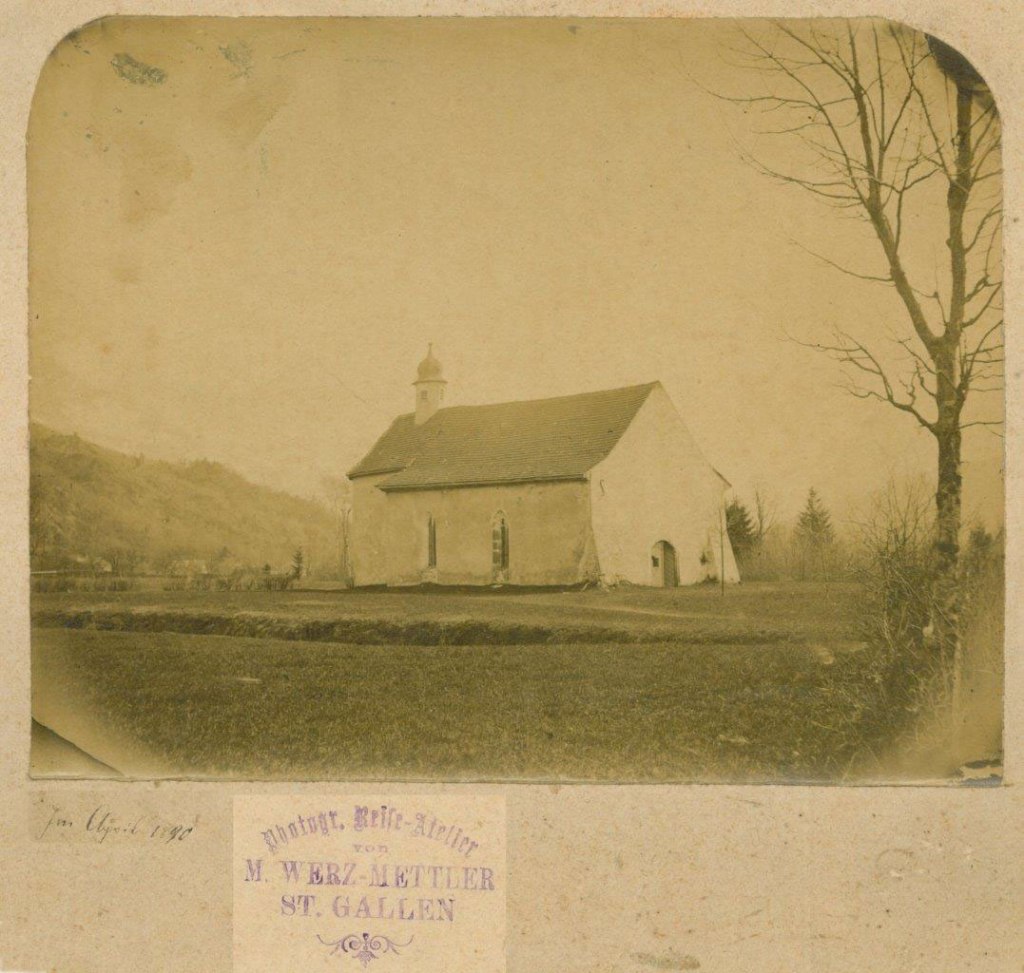The Sebastian Chapel in Schänis is probably one of the oldest places of worship in the valley. There is no historical evidence of its foundation. But legend has it that:
Towards the end of the eighth century, there was a dangerous epidemic among people and cattle in this region. The pious Hunfried, Lord of Rhaetia, vowed to build the chapel in order to obtain help from God in this tribulation. Saint Sebastian became the patron saint of the monastery, and the land of Gaster carried this saint in its banner until the fall of the old Confederation.
On Lichtmetz Day 1529, the iconoclasts invaded our chapel and destroyed its ornaments. Four years later, the suffragan (deputy) bishop of Chur returned the little church to the old service.
Folklore has it that the image of St. Sebastian came from the Linth valley, where it was thrown into the floods at the time of the religious turmoil and carried upright to Schänis. At the chapel of St. Sebastian, the waves brought it ashore, which is why it found its place here.
A. Fraesel, Pastor (St. Sebastian’s Chapel in Schänis, Uznach, Oberholzer, 1896).
374. Die Sebastianskapelle zu Schänis
Die Sebastianskapelle zu Schänis ist wohl eines der ältesten Gotteshäuser der Talschaft. Ihre Gründung ist historisch nicht nachweisbar. Die Sage aber erzählt:
Gegen Ende des achten Jahrhunderts herrschte in dieser Gegend unter Menschen und Vieh eine gefährliche Seuche. Da gelobte der fromme Hunfried, Gaugraf von Rätien, die Kapelle zu bauen, um von Gott Hilfe in dieser Drangsal zu erstehen. Der heilige Sebastian wurde der Schutzpatron des Stiftes, und das Land Gaster führte bis zum Untergang der alten Eidgenossenschaft diesen Heiligen in seinem Banner.
Am Lichtmetztage 1529 drangen die Bilderstürmer auch in unsere Kapelle ein und zerstörten ihren Schmuck. Vier Jahre später wurde durch den Weihbischof von Chur das Kirchlein dem alten Gottesdienste zurückgegeben.
Der Volksmund erzählt — und das stimmt mit dem Gesagten wenig überein — das Bild des heiligen Sebastian stamme von Linthtal her- dort sei es zur Zeit der Religionswirren in die Fluten geworfen worden, in denen es aufrechtstehend nach Schanis getragen worden. Bei der Sebastianskapelle hätten es die Wellen ans Land, gesetzt, weswegen es hier seinen Platz gefunden.
A. Fraesel, Pfarrer (Die hl. Sebastianskapelle zu Schänis. Uznach, Oberholzer, 1896.)

